Abstract
Many suppliers sell paracetamol tablets as an over-the-counter (OTC) product, commonly used to reduce fever and relieve pain. The main goal of this research was to compare and assess different brands of paracetamol tablets available in the Sangli district. Five different brands of paracetamol tablets were randomly collected from various pharmacies in the area. The research followed official guidelines from books like the United States Pharmacopeia (USP) and British Pharmacopoeia (BP) to conduct various quality tests and analyses.Several parameters were evaluated for these brands, including weight variation, friability (how easily the tablet breaks), hardness, drug content, identification tests, disintegration time (how quickly the tablet breaks down), and dissolution profile (how the drug is released in the body). The weight variation and friability tests showed that all brands were within acceptable limits. However, when tested for drug content using UV analysis, none of the brands had less than 95% of the active drug. Overall, each brand showed different results, but all were within the standards set by official guidelines.
Keywords
Paracetamol, Comparative evaluation, Quality control test, Different brands of paracetamol.
Introduction
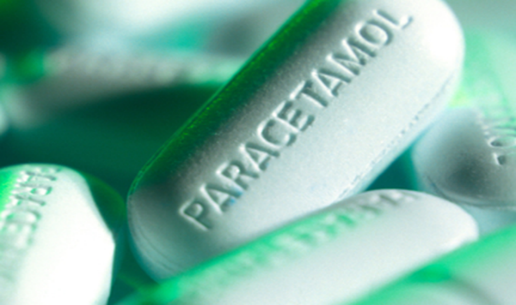
Paracetamol is a medicine used to treat mild to moderate pain. Paracetamol can also be used to treat fever (high temperature). It’s dangerous to take more than the recommended dose of paracetamol. Paracetamol overdose can damage your liver and cause death. Always follow the directions on the packet when using paracetamol. Paracetamol is a medicine used for mild to moderate pain. It can be bought over the counter in pharmacies, supermarkets and other shops.
??Paracetamol can be used for: -
??Backache. ??Headache
??Migraine. ??Muscle strains
??Period pain. ??Toothache
??Aches and pains due to colds and flu.
??Types of paracetamol: -
??Tablets. ??Capsules
??Suppositories. ??Soluble powders
??Liquids
Paracetamol is made by lots of different companies and sold using different names. It’s also often combined with other medicines and found in:
??Cold and flu medicines. ??Headache tablets

??Pacimol :-
Pacimol 500 Tablet helps relieve pain and fever by blocking the release of certain chemical messengers responsible for fever and pain. It is used to treat headaches, migraine, toothaches, sore throats, period (menstrual) pains, arthritis, muscle aches, and the common cold.
Uses of Pacimol Tablet :-
??Pain relief. ??Treatment of Fever
??Benefits of Pacimol Tablet :-
- Pain relief :-
Pacimol 500 Tablet is a common painkiller for treating aches and pains. It is widely used and rarely causes any side effects if taken properly. To get the most benefits, take it as prescribed. Do not take more or for longer than needed as that can be dangerous.
- Treatment of Fever :-
Pacimol 500 Tablet is also used to reduce a high temperature (fever). It works by blocking the release of certain chemical messengers that cause fever. It may be prescribed alone or in combination with other medicines. Take it as prescribed by the doctor.
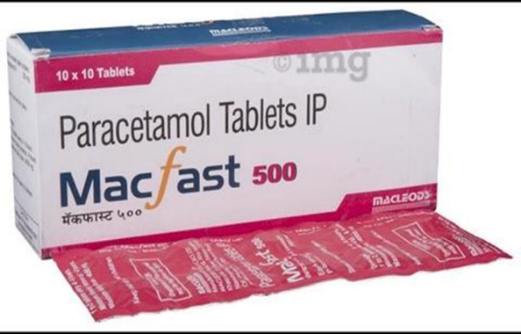
??Macfast :-
Macfast 500 Tablet helps relieve pain and fever by blocking the release of certain chemical messengers responsible for fever and pain. It is used to treat headaches, migraine, toothaches, sore throats, period (menstrual) pains, arthritis, muscle aches, and the common cold.
Uses of Macfast Tablet: -
??Pain relief. ??Treatment of Fever
??Benefits of Macfast Tablet :-
- Pain relief :-
Macfast 500 Tablet is a common painkiller for treating aches and pains. It is widely used and rarely causes any side effects if taken properly. To get the most benefits, take it as prescribed. Do not take more or for longer than needed as that can be dangerous.
- Treatment of Fever :-
Macfast 500 Tablet is also used to reduce a high temperature (fever). It works by blocking the release of certain chemical messengers that cause fever. It may be prescribed alone or in combination with other medicines. Take it as prescribed by the doctor.
Side effects of Macfast Tablet :-
Most side effects do not require any medical attention and disappear as your body adjusts to the medicine. Consult your doctor if they persist or if you’re worried about them
Common side effects of Macfast :-
??Stomach pain
??Nausea
??Vomiting
How to use Macfast Tablet :- Take this medicine in the dose and duration as advised by your doctor. Swallow it as a whole. Do not chew, crush or break it. Macfast 500 Tablet is to be taken with food.
How Macfast Tablet works :-
Macfast 500 Tablet is an analgesic (pain reliever) and anti-pyretic (fever reducer). It works by blocking the release of certain chemical messengers that cause pain and fever.
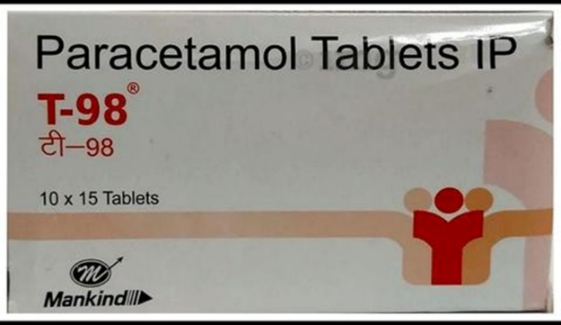
??T-98 :-
T-98 Tablet helps relieve pain and fever by blocking the release of certain chemical messengers responsible for fever and pain. It is used to treat headaches, migraine, toothaches, sore throats, period (menstrual) pains, arthritis, muscle aches, and the common cold.
??Uses of T-98 Tablet :-
??Pain relief. ??Treatment of Fever
??Benefits of T-98 Tablet :-
- Pain relief :-
T-98 Tablet is a common painkiller for treating aches and pains. It is widely used and rarely causes any side effects if taken properly. To get the most benefits, take it as prescribed. Do not take more or for longer than needed as that can be dangerous.
- Treatment of Fever :-
T-98 Tablet is also used to reduce a high temperature (fever). It works by blocking the release of certain chemical messengers that cause fever. It may be prescribed alone or in combination with other medicines. Take it as prescribed by the doctor.
Side effects of T-98 Tablet :-
Most side effects do not require any medical attention and disappear as your body adjusts to the medicine. Consult your doctor if they persist or if you’re worried about them
Common side effects of T-98 :-
??Stomach pain
??Nausea
??Vomiting
How to use T-98 Tablet :-
Take this medicine in the dose and duration as advised by your doctor. Swallow it as a whole. Do not chew, crush or break it. T-98 Tablet is to be taken with food.
How T-98 Tablet works :-
T-98 Tablet is an analgesic (pain reliever) and anti-pyretic (fever reducer). It works by blocking the release of certain chemical messengers that cause pain and fever.
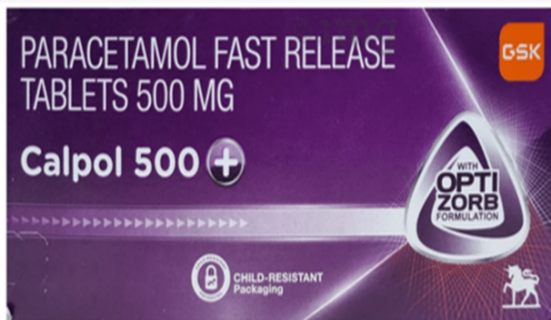
??Calpol :-
Calpol 500 + Tablet helps relieve pain and fever by blocking the release of certain chemical messengers responsible for fever and pain. It is used to treat headaches, migraine, toothaches, sore throats, period (menstrual) pains, arthritis, muscle aches, and the common cold.
Uses of Calpol Tablet :-
??Pain relief
??Treatment of Fever
??Benefits of Calpol Tablet :-
- Pain relief :-
Calpol 500 + Tablet is a common painkiller for treating aches and pains. It is widely used and rarely causes any side effects if taken properly. To get the most benefits, take it as prescribed. Do not take more or for longer than needed as that can be dangerous.
- Treatment of Fever :-
Calpol 500 + Tablet is also used to reduce a high temperature (fever). It works by blocking the release of certain chemical messengers that cause fever. It may be prescribed alone or in combination with other medicines. Take it as prescribed by the doctor.
Side effects of Calpol Tablet :-
Most side effects do not require any medical attention and disappear as your body adjusts to the medicine. Consult your doctor if they persist or if you’re worried about them
Common side effects of Calpol :-
??Stomach pain
??Nausea
??Vomiting
How to use Calpol Tablet: -
Take this medicine in the dose and duration as advised by your doctor. Swallow it as a whole. Do not chew, crush or break it. Calpol 500 + Tablet is to be taken with food
How Calpol Tablet works: -
Calpol 500 + Tablet is an analgesic (pain reliever) and anti-pyretic (fever reducer). It works by blocking the release of certain chemical messengers that cause pain and fever.
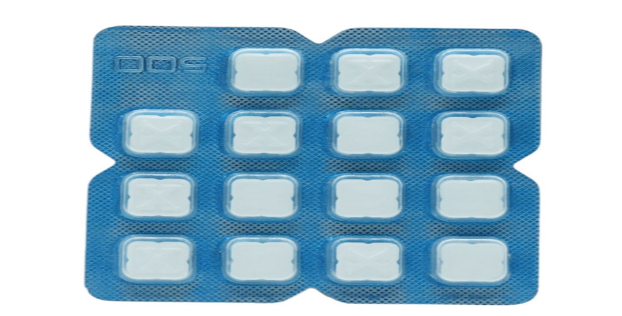
??Xykaa :-
Xykaa Rapid 650 Tablet helps relieve pain and fever by blocking the release of certain chemical messengers responsible for fever and pain. It is used to treat headaches, migraine, toothaches, sore throats, period (menstrual) pains, arthritis, muscle aches, and the common cold.
Uses of Xykaa Tablet :-
??Pain relief. ??Treatment of Fever
Benefits of Xykaa Tablet :-
- Pain relief :-
Xykaa Rapid 650 Tablet is a common painkiller for treating aches and pains. It is widely used and rarely causes any side effects if taken properly. To get the most benefits, take it as prescribed. Do not take more or for longer than needed as that can be dangerous.
- Treatment of Fever :-
Xykaa Rapid 650 Tablet is also used to reduce a high temperature (fever). It works by blocking the release of certain chemical messengers that cause fever. It may be prescribed alone or in combination with other medicines. Take it as prescribed by the doctor.
Side effects of Xykaa Tablet :-
Most side effects do not require any medical attention and disappear as your body adjusts to the medicine. Consult your doctor if they persist or if you’re worried about them
Common side effects of Xykaa :-
??Stomach pain
??Nausea
??Vomiting
How to use Xykaa Tablet :-
Take this medicine in the dose and duration as advised by your doctor. Swallow it as a whole. Do not chew, crush or break it. Xykaa Rapid 650 Tablet is to be taken with food.
How Xykaa Tablet works :- Xykaa Rapid 650 Tablet is an analgesic (pain reliever) and anti-pyretic (fever reducer). It works by blocking the release of certain chemical messengers that cause pain and fever.
Clinical implications:-
paracetamol is mostly eliminated by hepatic metabolism, patients with severe hepatic failure have a considerably longer elimination half-life, and therefore, paracetamol must be used cautiously in such patients. Intoxication are not infrequent because paracetamol is one of the most widely used over-the-counter drugs. Paracetamol intoxication has important clinical implications as it can induce life-threatening hepatic and renal failure. This failure is probably due to the accumulation of toxic metabolites, caused by an increase in their production and a decrease in their detoxification due to depletion of glutathione stores. The treatment of intoxication is
- Gastric emptying and administration of active charcoal
- Administration of N-acetylcysteine, which acts by replenishing the hepatic stores of glutathione (preferably by the oral route, otherwise intravenously)
- Heamodialysis may be useful if started within 12 hours after ingestion of huge doses.
??Parameter :-
Hardness Test:
The hardness test was conducted using a Monsanto Hardness Tester, with each tablet placed vertically in the device. A load was gradually applied, and the load at which the tablet broke was recorded. Approximately 10 tablets were tested in this manner.
Friability: The friability test was performed using a Roche Friabilator, requiring approximately 10 tablets. The apparatus was operated at a rotating speed of 25 rpm for a duration of 4 minutes. After the rotation process, the tablets were weighed and compared to their initial weight. The percentage friability (% F) was calculated using the formula:
% F = [1 – (W/Wo)] x 100
Where:
??% F = Friability percentage
??Wo = Initial weight of the tablets
??W = Weight of the tablets after rotation.
Tablet Disintegration:
The disintegration test was conducted using a disintegration test apparatus, where six tablets were placed. The temperature of the medium, which was simulated gastric fluid (0.1 N HCl), was maintained at 37 ± 0.2°C. The time taken for the tablets to disintegrate was then recorded.
Dissolution Test:
To perform the dissolution test, a USP Type-1 (Basket) 8-Paddle Apparatus was used. The tablets were placed in 900 ml of simulated gastric fluid (0.1 N HCl). The experimental conditions were carefully maintained, including keeping the temperature of the medium at 37 ± 0.2°C and the basket’s rotation speed at 150 rpm. Every 10 minutes, 2 ml of the dissolution medium was withdrawn, and the volume was replenished with fresh medium (0.1 N HCl) to maintain sink conditions. This process was repeated every 10 minutes for one hour.The samples withdrawn were diluted with fresh dissolution medium to a total volume of 10 ml, and the resulting solution was filtered. The absorbance of each sample was measured using UV spectroscopy at a wavelength of 222 nm, as specified by USP.
Assay:
To find the difference between the actual amount of active drug and the labeled amount, an assay was done. Ten tablets from each brand were taken, ground into a fine powder, and from this, a portion containing 150 mg of paracetamol was placed in a 200 ml flask. To this, 100 ml of distilled water and 50 ml of 0.1M sodium hydroxide (NaOH) were added. The mixture was sonicated (mixed using sound waves) for 15 minutes, then diluted to full volume and filtered.Next, 10 ml of the filtered solution was transferred to a 100 ml flask and diluted with purified water. In another 100 ml flask, 10 ml of 0.1M NaOH and 10 ml of the filtered solution were added and diluted with distilled. water. A UV spectrophotometer was prepared to measure absorbance (how much light the solution absorbs) using 0.1M NaOH as a blank (a reference). The absorbance of the sample was measured at a wavelength of 257 nm. The same procedure was repeated for 150 mg of pure paracetamol to get Its absorbance. This absorbance was then used to calculate the percentage of the active drug in each brand of tablets. Beer-Lambert’s law was applied to determine the concentration of the drug in each sample according to British Pharmacopoeia (BP) standards.
CONCLUSION: -
“Based on the evaluation of Pacimol, Macfast, T98, Calpol, and Xykaa, it can be concluded that while each tablet demonstrates variations in terms of performance (such as efficacy, dissolution rate, or patient response), all of them fall within the acceptable standards as defined by regulatory guidelines. Although there are minor differences in certain parameters, none of the products exceed the prescribed limits, indicating that all of these brands are safe and effective for consumer use within their respective formulations.”
REFERENCES
- Sadezky A, Doffler D, Ternes T, Measurements and removal options of pharmaceuticals in European WWTPS; outcome of the EU project KNAPPE, Proceedings of pharmaceutical products in the environment Trends towards lowering occurring and impact, 19-20 Feb 2008, p 19
- Liney KE, Jobling S, Shears JE, Simpson P, Tylor CR. Assessing the sensitivity of different life stages in Sexual disruption for roach (Rutilus rutilus) exposed to effluent of wastewater treatment works. Environmental Health Perspectives, 115, (2005), pp 1299-1307.
- U.S. Food and Drug Administration (FDA). Page Last Updated: January 16, 2014. Acetaminophen Information Archived 2014-02-16 at the Wayback MachinePage accessed February 23, 2014
- Collin Richman and Staffan Castensson, Impact of Waste pharmraceuticals: an environmental hazards or “Greenwash”?, The Pharmaceutical journal, 280, (2008), pp 335-342
- Sulochana Singh, Malabika Talukdar, Upendra Nath Dash. Studies on molecular interactions in aqueous and Aqueous urea systems of paracetamol (N-(4- hydroxyphenyl) ethanamide). J Molecular Liquids. 265, (2018), pp 679–686.
- Robinson RA, Stokes RH. Electrolyte Solutions. Butterworths Scientific publication, London, 1955, 30.
- R.C. Weast and M.J. Astle (Eds.)., Handbook of chemistry and physics, 1913-CRC Press, INC-1980.
- Das S, Dash UN. Physico-chemical behaviour of Lphenylalanine in aqueous and aqueous D-glucose solutions At different temperatures. J. Mol. Liq. 2017; 236: 283–289.
- B. A. Dilmohamud, J. Seeneevassen, S. D. D. V. Rughooputh, P. Ramasami, “Surface tension and related Thermodynamic parameters of alcohols using the Traube stalagmometer”, Eur. J. Phys. 26(6), 2005, pp.1079–1084.
- Sulochana Singh, Malabika Talukdar, Upendra Nath Dash. Solute-solvent and solute-solute interactions of Ibuprofen in aqueous and in aqueous solutions of urea, sodium salicylate and nicotinamide by volumetric and Interferometric techniques. J Molecular Liquids . 241 (2017) 934-935
- M.M.R. Meor Mohd Affandi, Minaketan Tripathy , A.B.A.Majeed, Solubility enhancement of simvastatin And atorvastatin by arginine: Molecular dynamics and related solution chemistry using viscometric analysis,Journal of Molecular Liquids 223 (2016) 1093–1099
- R.T.M. Bicknell, K. G. Lawrence, M. A. Seeley, D. Feakins and L. Werblan., Relative viscosities of Solutions of sodium and potassium bromides and iodides in dimethyl sulphoxides at 25, 35 and 45° C, J. Chem.Soc Faraday Trans. 1,72, 1976, pp.307-313.
- Zhenning Yan, Jianji Wang, Wei Kong, Jinsuo Lu., Effect of temperature on volumetric and viscosity Properties of some ?-amino acids in aqueous calcium chloride solutions, Fluid Phase Equilibria, 215(2), 2004,Pp.143-150.14. Glasstone S., An introduction to electrochemistry, Kindle edition, Chapter 2, 2006, pp.29.
- Dehury S K, Talukdar M, Dash U N, Role of Cation and Anions (K+ , Cr2O7 2- and P2O7 4- ) Towards ion Association and Solvation in Aqueous and Aqueous d-Mannitol Mixtures at Different Temperatures, Int. J.Pharm. Sc. Rev. Res., 26(2), 2014, 50-54.
- J.I. Bhat, M.K. Shetty, J. Mol. Liq. 160 (2011) 140–14 17. P.C. Verma, H. Mengistu, International Journal of Engineering Technology, Management and Applied Sciences 6 (2018) 2349–4476.
- Sulochana Singh, Malabika Talukdar, Upendra Nath Dash., Ultrasonic studies on paracetamol in aqueous
- Solutions of sodium salicylate and nicotinamide, Journal of Molecular Liquids, 249 (2018), pp.815–824.
- Sulochana Singh, Malabika Talukdar, Upendra Nath Dash., Studies on molecular interactions in aqueous And aqueous urea systems of paracetamol (N-(4- hydroxyphenyl) ethanamide), J. Mol. Liq., 265 (1), 2018,Pp.679-686.
- Derek GP, Braian JP, Water binding properties of hydrogel polymers for reverse osmosis and related Applications, British Polymer Journal, 11(3), 2007, 130-136.
- Thakur BR, Chemistry and uses of pectin-A review, Critical Reviews in Food Science and Nutrition. 37,1997, 47-73.
- Saha Dibyajyoti, Jain Vibhor K, Dhirehe Upendra K et al. Studies on surface tension of selected mouthwash Formulation by drop number method using Traube’s Stalagmometer technique. Int. J. Res.in Ayurveda and Pharm., 2011; 2(1): 289-291.
- Sujit Kumar Dehury, Malabika Talukdar, Upendra Nath Dash., Thermo-Acoustic Parameters of MultiCharged Electrolytes (Sodium Thiosulphate and Sodium Chromate) in Aqueous Binary Fructose Solutions and
- Derivation of Surface Excess Values from Ultrasonic Velocity Measurements, International Journal of Pharmaceutical Sciences Review and Research, 26(1), 2014, pp.9
- Soppimath KS, Kulkarni AR, Aminabhavi TM, Chemically modified polyacrylamide-guar gum based cross Linked anionic microgels as pH-sensitive drug delivery systems: preparation and characterization, Journal of Controlled Release, 75, 2001, 331–345.
- Malviya R, Srivastava P, Bansal M, Sharma PK, Preparation and Evaluation of Disintegrating Properties of Cucurbita Maxima Pulp Powder, International journal of pharmaceutical sciences (accepted manuscript IJPS09-119, 2010)
- Tripathi KD: Essential of Medicinal Pharmacology. Jaypee Brothers, Medical Publishers Ltd. Dehli, Fifth Edition.
- Palash Karmakar, Md. Golam Kibria: In-vitro comparative evaluation of quality control parameters between paracetamol and paracetamol/caffeine tablets available in Bangladesh. International Current Pharmaceutical Journal 2012; 1(5):103-109.
- US Pharmacopoeia, The Official Compendia of Standards, 2, 2007, 1269- 90.
- British Pharmacopoeia, H. M. Stationary office, London, 3, 2008, 2968.
- US Pharmacopoeia, 28 (30-NF25), 2007, 618-690.
- L. Allen, Ansel’s Pharmaceutical Dosage form and Drug Delivery System. Lippincott Williams and Wilkins, Wolters Kluwer health, 9, 233.
- British Pharmacopoeia, UK London, Appendix IIB, 2007, 1678.
- Bamigbola, E.A., Ibrahim, M.A., Attama, A.A. 2009. Comparative in-vitro assessment of soluble and plain brands of aspirin tablets marketed in Nigeria, Sci Res Essays, 11(4), 1412-1414.


 Vaibhavi deepak jape * 1
Vaibhavi deepak jape * 1






 10.5281/zenodo.14042472
10.5281/zenodo.14042472